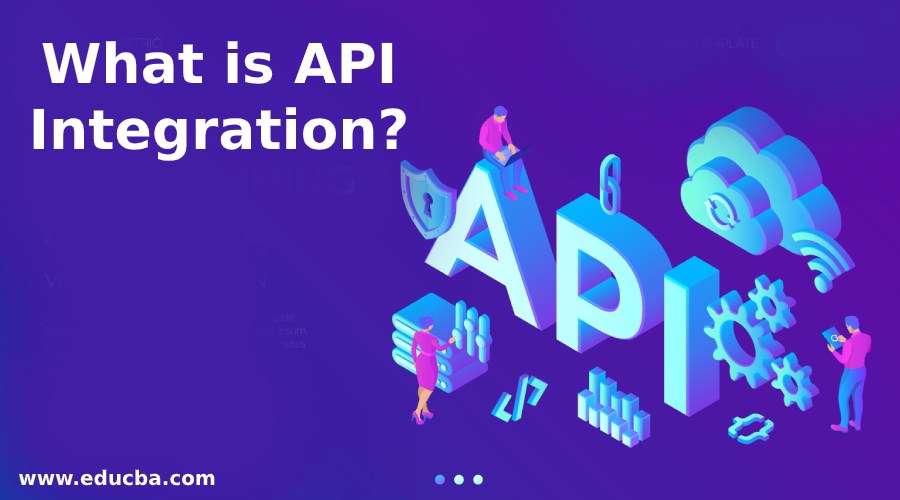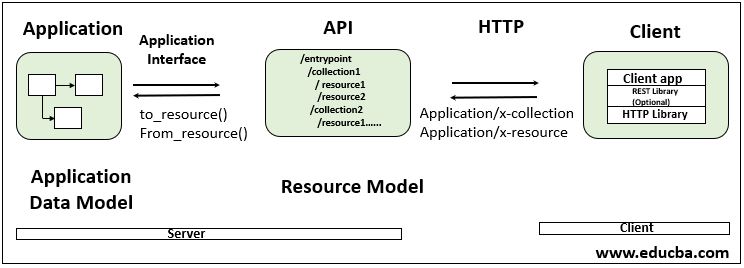Updated April 10, 2023
What is API Integration?
The API (Application Programming Interface) is classified as a type of messenger used for processing different types of user requests and maintaining the functions of the system. The API helps to interact with application data and devices. The data delivery is possible through APIs and maintains connectivity among programs and devices. Using the APIs, the application system is able to communicate with the backend system of the organization. The new APIs can be created by adding code to the application and can be integrated with the application to provide new functionalities in the application. Communication can be maintained between different applications through APIs.
API Integration with Architecture
The development of APIs helps the system to communicate with other parts of the system and interact with the database system. The APIs provide a common platform for communication with the user and the system. The API integration plays an important part as it helps to automate the workflows for various applications. Without the use of API integration, all this work needs to be done manually, which can take time and effort both. By the API integration, the data can be transfer very fast and also in a secure way. By the API, the user can get access to web services and applications, making no effort. The user can use the REST APIs to interact with the system. The developer develops the APIs for some specific purpose and as per the system requirements. When a user uses the application, they can request for any type of service, and that request is transferred to the system, and then the request is served by the system, and the system displays the output to a user. The devices can be connected to the system by the API integration without making any effort and taking no time.
In the above diagram, there is one client, application system, and APIs. The user can interact with the system using different APIs offered by the application. In the above figure, the system offers various APIs that act as a resource model and communicate between application and client. The application presents the output at the user end using this resource model only.
How does API Integration Work?
As the developer completes the coding part and designs the API, the next job is to integrate the API with the system and enables the system to use those APIs. As the APIs help to provide the abstraction in functionality between different systems. The APIs act as an interface that helps the application interact with its users and offer various functionality to the user. The user can communicate with the system by using numerous APIs. When the user interacts with the system and queries for some data, then at that time, APIs come into the picture. The API interacts with the database, fetch the data from the database, converts it into some presentable form, and displays the data to the user. The APIs are used to serve the user request and requirement and act as a platform for communication of system and user. The APIs interact with the devices, data, and applications. The connectivity can be created while using APIs. The APIs process the user request and transmits that request to the system, and interact with the system. Then the processing starts in the system, and then the result is formed by the system. Then this result is sent to the user by the APIs.
Benefits of API Integration
For the modern era of technology, the need for APIs is a crucial component of the system. There are numerous APIs that provide different functionality that increases the uses of the system. Some of the numerous benefits for API integration are described below:
- Helps to Connect to Cloud Application: There are different types of APIs that provide the functionality to the system to connect to the cloud platform. The APIs integration is considered as a standard to connect to the cloud platform. There is a need for an API integration platform that helps the system to connect to cloud APIs.
- Different APIs Various Functionality: As the number of APIs increases for the system, the system’s functionality and features also increase. The APIs can be designed for every feature that helps the system to perform better and offered various functionality to the user. The use of an API integration platform helps to quickly create new APIs and save effort and time for both developers.
- Helps to Integrate with Data: The APIs help to integrate with the database of the system. The database is used to store huge chunks of data, and the APIs can be used to extract the data from the database. The organization uses the APIs for internal use for extracting the data from the database using numerous data fetching APIs. The APIs help reduces the effort of data fetching as it can take time because of the data’s size present in the database.
- Helps to better management: As the developers develop the new APIs for the organization, this activity needs to be properly managed by the management staff. The APIs will help the system and make it more effective. The API integration can help to manage the system better and can increase productivity for the organization.
- Interaction with Application Become Easy: The APIs integration platform provides the platform to users to easily communicate to the system, taking no extra effort and time. The user can easily access the features of the system using various APIs. The APIs provide the platform to communicate to the application directly. As for every feature, there is different APIs the organization needs to properly do the API management as this can be a crucial task for the organization.
Conclusion
The API integration act as a common platform to interact with the system and user. The APIs act as an entry-point for entering into the system and access the system functionality. The APIs are used for data-related operations, system communication, and many more. The developers develop the code and generate new APIs to increase the functionality of the system.
Recommended Articles
This is a guide to What is API Integration?. Here we also discuss the introduction, and how does API integration works? Along with benefits. you may also have a look at the following articles to learn more –




